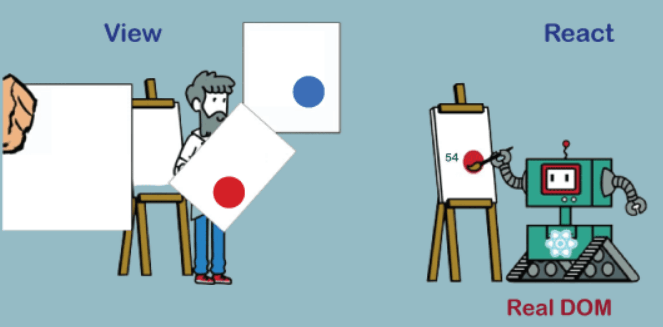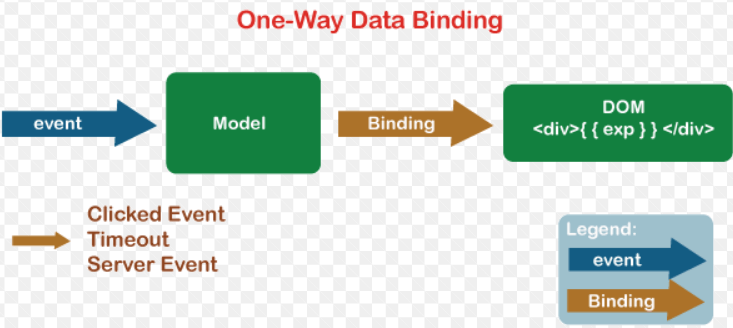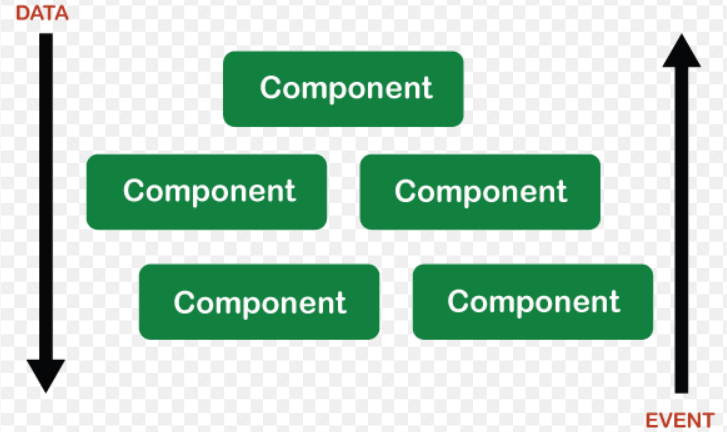React Features
- Facebook created the front-end JavaScript framework known as React.js. React is used to declaratively build composable user interfaces in a reliable and efficient way.
- ReactJS is an open-source, component-based front end JavaScript toolkit that is well suited for creating reusable UI components since it is declarative, effective, and versatile.
- React is an open-source library that is declarative and flexible for creating graphical user interfaces that use UI components.
- It's widely used to build web applications with dynamic user interfaces that require updated information all the time.
- ReactJS's distinctive yet essential characteristics are what give it its widespread appeal. They are:
Virtual DOM:
- A virtual DOM object is a representation of a DOM object that makes an exact replica of the actual DOM object. When the web application is modified, the entire UI is recreated in the virtual DOM representation.
- The previous and new DOM representations are then contrasted.
- Real DOM manipulation is significantly slower than VDOM manipulation since no screen drawing occurs.

- The actual DOM will only be updated after that with the elements that have changed. The creation of applications is facilitated and accelerated by this React functionality.
Component Structure:
- The term "component" refers to everything in React. Therefore, creating a web interface or application in React requires the construction of a number of different components.
- The reusable nature of these components makes code maintenance simpler when working on larger projects.
- In essence, this means that the user interface of a React JS-based software is made up of a variety of components, every single one which has its own distinct logic.
- Developers can send the data across the software because the DOM is unaffected. The visual design and user interface of an app are heavily influenced by React JS components.
JAVA SCRIPT Extension (JSX):

- For many web developers, JSX is the preferred option. Even though it is not necessary for React development, writing react.js documents in JSX rather than JavaScript has many benefits.
- An addition to JavaScript's syntax is JSX. With the help of this markup syntax, the application's user interface will be described. The syntax is comparable to HTML since developers use it to make React components.
- Since it makes it very simple for developers to generate the building blocks, JSX is one of the best features of React.
One-way Data Binding:
- As a result of React's use of a unidirectional data flow, developers are required to change components using the callback feature rather than by directly altering them.
- Data flow can be controlled from a single location due to the architectural Flux component of JS apps. In reality, it improves developer control of the product and boosts its effectiveness and versatility.

- The unidirectional flow of data is facilitated by the architecture of the Flux JS application. The application becomes more adaptable as a result, increasing its effectiveness.
Unidirectional data flow and Flux:
- React.js is only designed to support one kind of data flow because data can only move in one direction, downstream. You will require additional features if the data has to move in a different direction.

- React includes a collection of immutable data that are supplied as HTML tag properties to the component renderer. The components allow a call back function but are unable to alter any properties directly.
Enables enrichment of Building and Declarative UI:
- The user interface (UI) of an app is essential in today's world; an app that has a good UI and provides consumers an enjoyable browsing and purchasing experience will certainly have a far higher chance of success than one that has a poor UX.
- React JS's declarative components feature, in particular, makes it simple to create engaging interfaces of the finest quality.
- This capability makes React code simpler to read and maintain. React JS is the best platform for building interesting and captivating user experiences for both internet and mobile applications.
Quick Rendering:
- The app structure needs to be established from the start when developing a complex, high-load application.
- Since the DOM structure resembles a tree, this is where the virtual DOM capability proves useful.
- Therefore, a tiny change performed at the top-level layer may have a significant impact on the user interface of the programme. Virtual DOM makes it possible to test all changes first before implementing them to ascertain the risk associated with each change.
- App developers may offer a better user experience and quick app performance with this technique.
Easier and Simplicity:
ReactJS uses JSX files to simplify the application and make it easier to understand the concepts and code. We are aware that ReactJS uses a component-based approach, allowing you to reuse the code as needed. This makes using and learning it simple.
Performance:
- The performance of ReactJS is considered to be excellent. It is significantly superior to other frameworks on the market now, because of this feature. This is because it manages a DOM that is virtual.

- The DOM is an XML, HTML, and XHTML-compatible cross-platform development API. The DOM fits entirely within memory. As a result, when constructing a component, we didn't write straight to the DOM.
- Instead, we're building virtual components that can be transformed into the DOM, which will lead to a faster and smoother performance.